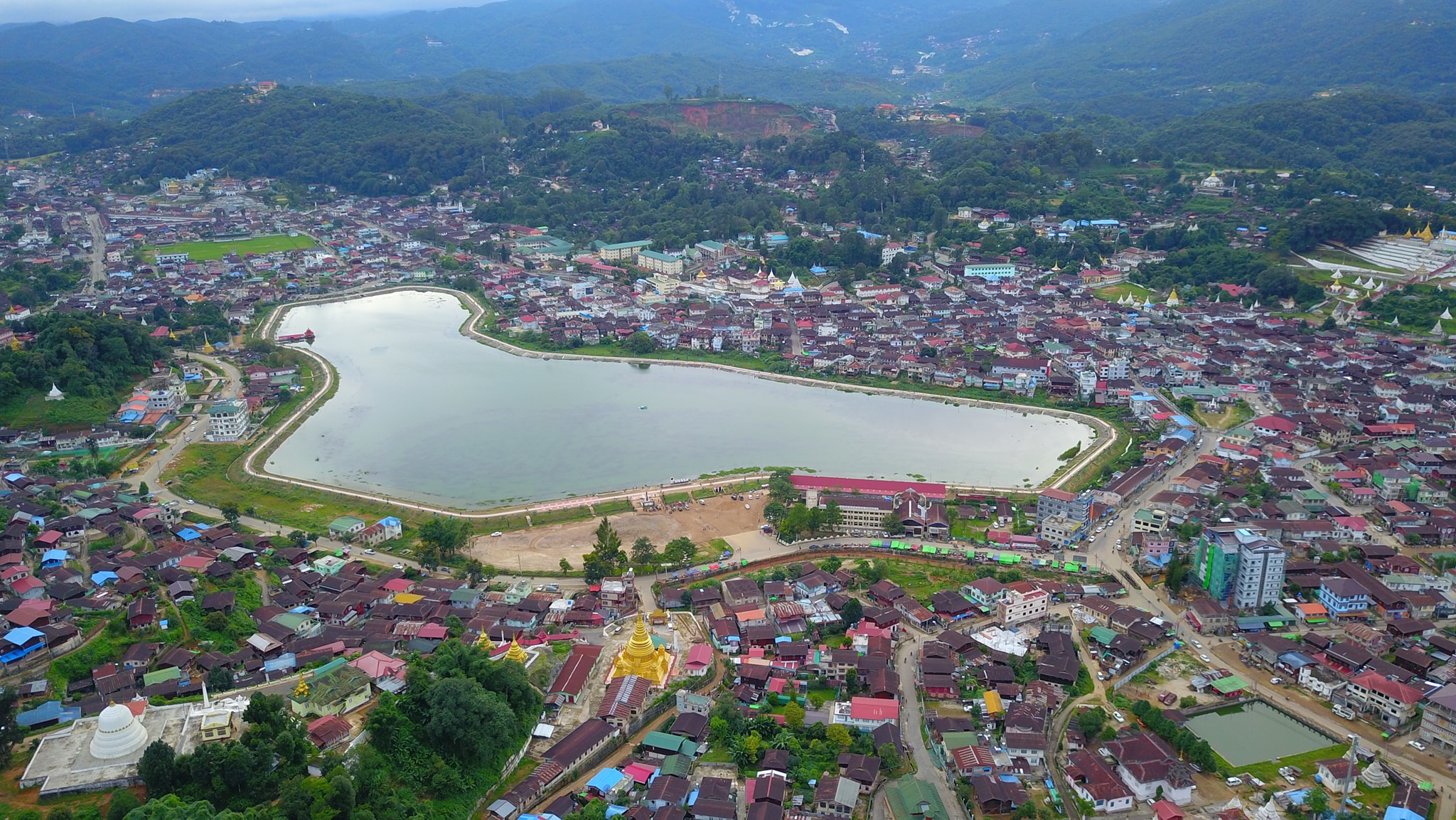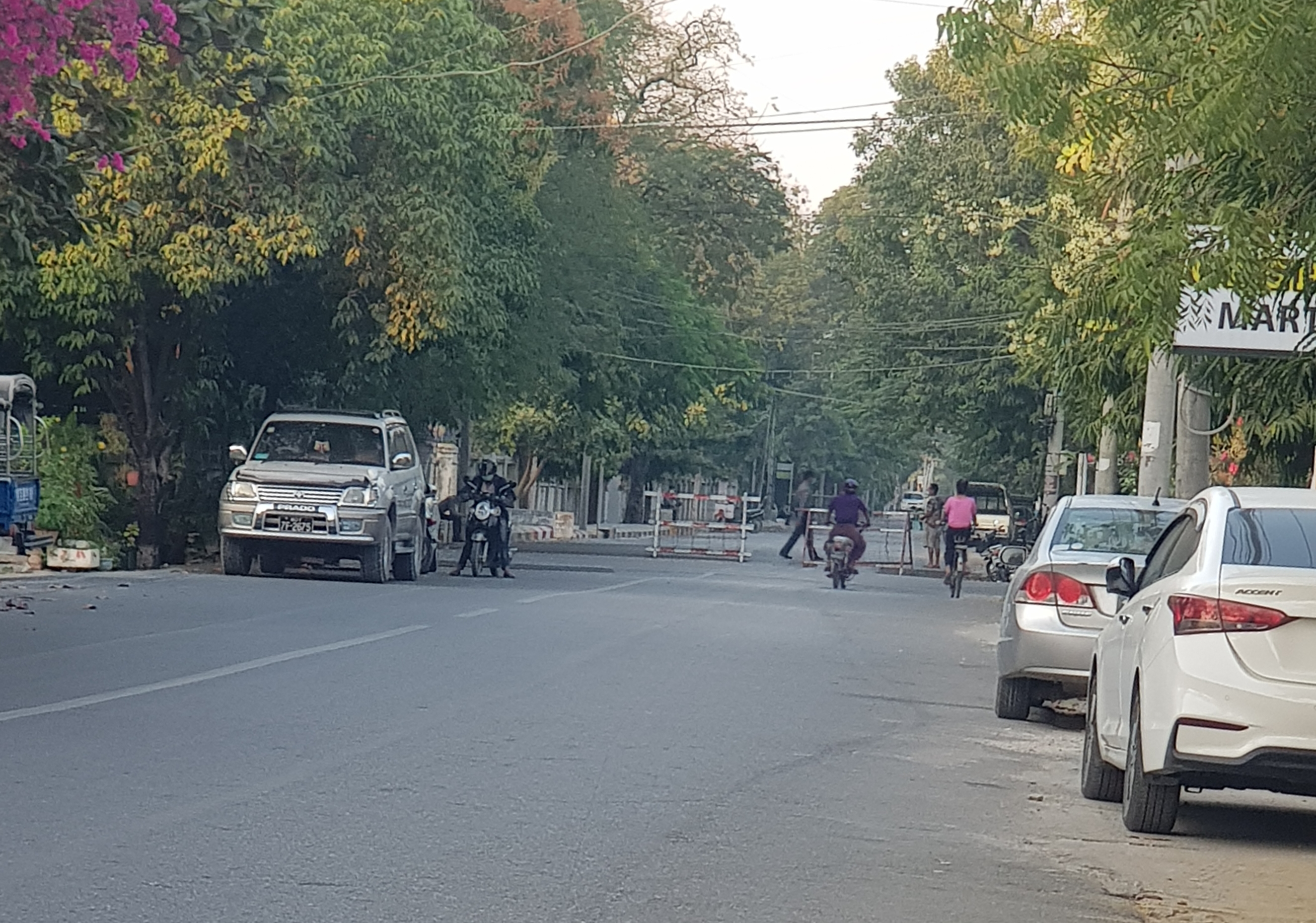|
Mogok Township
Mogok Township (also spelled as Mogoke Township) is a township of Thabeikkyin District in Mandalay Region, Burma (Myanmar). It is located north of the city of Mandalay and surrounds the town of Mogok. Demographics 2014 The 2014 Myanmar Census reported that Mogok Township had a population of 167,149. The population density was 142.3 people per km2. The census reported that the median age was 26.7 years, and 103 males per 100 females. There were 35,247 households; the mean household size was 4.5. Mogok People's Defence Force The Mogok People's Defence Force of the National Unity Government A national unity government, government of national unity (GNU), or national union government is a broad coalition government consisting of all parties (or all major parties) in the legislature, usually formed during a time of war or other na ..., established after the 2021 Myanmar coup d'état, is based in Mogok Township, and is a participant in the ongoing Operation 1027 again ... [...More Info...] [...Related Items...] OR: [Wikipedia] [Google] [Baidu] |
Townships Of Burma
Townships (; ) are the third-level administrative divisions of Myanmar. They are the sub-divisions of the districts of Myanmar. According to the Myanmar Information Management Unit (MIMU), as of December 2015, there are 330 townships in Myanmar."Myanmar States/Divisions & Townships Overview Map" Myanmar Information Management Unit (MIMU) Townships are the basic administrative unit of local governance and are the only type of administrative division that cover all of Myanmar. A township is administered by a township administrator, a civil servant appointed through the General Adminis ... [...More Info...] [...Related Items...] OR: [Wikipedia] [Google] [Baidu] |
Burma
Myanmar, officially the Republic of the Union of Myanmar; and also referred to as Burma (the official English name until 1989), is a country in northwest Southeast Asia. It is the largest country by area in Mainland Southeast Asia and has a population of about 55 million. It is bordered by India and Bangladesh to its northwest, China to its northeast, Laos and Thailand to its east and southeast, and the Andaman Sea and the Bay of Bengal to its south and southwest. The country's capital city is Naypyidaw, and its largest city is Yangon (formerly Rangoon). Early civilisations in the area included the Tibeto-Burman-speaking Pyu city-states in Upper Myanmar and the Mon kingdoms in Lower Myanmar. In the 9th century, the Bamar people entered the upper Irrawaddy valley, and following the establishment of the Pagan Kingdom in the 1050s, the Burmese language and culture and Theravada Buddhism slowly became dominant in the country. The Pagan Kingdom fell to Mongol invas ... [...More Info...] [...Related Items...] OR: [Wikipedia] [Google] [Baidu] |
2021 Myanmar Coup D'état
A coup d'état in Myanmar began on the morning of 1 February 2021, when Elections in Myanmar, democratically elected members of the country's ruling party, the National League for Democracy (NLD), were deposed by the Tatmadaw, Myanmar's military, which then vested power in a State Administration Council, military junta. Acting President of Myanmar Myint Swe proclaimed a year-long state of emergency and declared power had been transferred to Commander-in-Chief of Defence Services Senior general (Myanmar), Senior General Min Aung Hlaing. It declared the results of the 2020 Myanmar general election, November 2020 general election invalid and stated its intent to hold a Next Myanmar general election, new election at the end of the state of emergency. The coup d'état occurred the day before the Assembly of the Union, Parliament of Myanmar was to swear in the members elected in the 2020 election, thereby preventing this from occurring. President Win Myint and State Counsellor of My ... [...More Info...] [...Related Items...] OR: [Wikipedia] [Google] [Baidu] |
National Unity Government Of Myanmar
The National Unity Government of the Republic of the Union of Myanmar (; abbreviated NUG) is a provisional government for Myanmar formed by the Committee Representing Pyidaungsu Hluttaw (CRPH), a group of elected lawmakers and Member of parliament, members of parliament ousted in the 2021 Myanmar coup d'état. It includes representatives of the National League for Democracy (the party of former State Counsellor of Myanmar, state counsellor Aung San Suu Kyi), List of insurgent groups in Myanmar, ethnic minority insurgent groups, and various List of political parties in Myanmar, minor parties. The State Administration Council (SAC) military junta has declared the NUG illegal and a terrorist organization, while the NUG designated the Tatmadaw and its affiliated organizations as terrorist organizations under Section 3 of Myanmar's Counter-Terrorism Law. In May 2021, the NUG announced the formation of a People's Defense Force of Myanmar, People's Defense Force, and in Septembe ... [...More Info...] [...Related Items...] OR: [Wikipedia] [Google] [Baidu] |
People's Defence Force (Myanmar)
The People's Defence Force is the armed wing of the National Unity Government (NUG) in Myanmar. The armed wing was formed by the NUG from youths and pro-democracy activists on 5 May 2021 in response to the coup d'état that occurred on 1 February 2021 that put the military junta and their armed wing the Tatmadaw in power. The military junta designated it as a terrorist organisation on 8 May 2021. In October 2021, NUG's Ministry of Defence announced that it had formed a central committee to coordinate military operations across the country. According to the NUG statement, the PDF is divided into five regional commands (Northern, Southern, Central, Eastern and Western commands), each mounting at least three brigades. Each brigade consists of five battalions, which divide into four companies. On 13 July 2021, NUG's minister of defence Yee Mon stated that the strength of the newly-formed militia was expected to reach 8,000 by the end of the month. Estimates by ''The Irrawaddy'' p ... [...More Info...] [...Related Items...] OR: [Wikipedia] [Google] [Baidu] |
Population Density
Population density (in agriculture: Standing stock (other), standing stock or plant density) is a measurement of population per unit land area. It is mostly applied to humans, but sometimes to other living organisms too. It is a key geographical term.Matt RosenberPopulation Density Geography.about.com. March 2, 2011. Retrieved on December 10, 2011. Biological population densities Population density is population divided by total land area, sometimes including seas and oceans, as appropriate. Low densities may cause an extinction vortex and further reduce fertility. This is called the Allee effect after the scientist who identified it. Examples of the causes of reduced fertility in low population densities are: * Increased problems with locating sexual mates * Increased inbreeding Human densities Population density is the number of people per unit of area, usually transcribed as "per square kilometre" or square mile, and which may include or exclude, for example, ar ... [...More Info...] [...Related Items...] OR: [Wikipedia] [Google] [Baidu] |
Mandalay
Mandalay is the second-largest city in Myanmar, after Yangon. It is located on the east bank of the Irrawaddy River, 631 km (392 mi) north of Yangon. In 2014, the city had a population of 1,225,553. Mandalay was founded in 1857 by King Mindon Min, Mindon, replacing Amarapura as the new royal capital of the Konbaung dynasty. It was Burma's final royal capital before the kingdom's Third Anglo-Burmese War, annexation by the British Empire in 1885. Under British rule, Mandalay remained commercially and culturally important despite the rise of Yangon, the new capital of British Burma. The city suffered extensive destruction during the Japanese conquest of Burma in the World War II, Second World War. In 1948, Mandalay became part of the newly independent Union of Burma. Today, Mandalay is the economic centre of Upper Myanmar and considered the centre of Burmese culture. A continuing influx of irregular Overseas Chinese, Chinese immigrants, mostly from Yunnan, since the late ... [...More Info...] [...Related Items...] OR: [Wikipedia] [Google] [Baidu] |
Mandalay Region
Mandalay Region (, ; formerly Mandalay Division) is an administrative divisions of Myanmar, administrative division of Myanmar. It is located in the center of the country, bordering Sagaing Region and Magway Region to the west, Shan State to the east, and Bago Region and Kayin State to the south. The regional capital is Mandalay. To the south of the region lies the national capital of Naypyidaw. The division consists of eleven districts, which are subdivided into 28 townships and 2,320 wards and village-tracts. Mandalay Region is important in Economy of Myanmar, Myanmar's economy, accounting for 15% of the national economy. It is under the administration of the Mandalay Region Government. History The history of Mandalay Region is the same as that of much of Upper Myanmar except that for much of Burmese history, the political power emanated out of royal capitals located in Mandalay Region. The country's present capital, Naypyidaw, and most former royal capitals of the Burmese nati ... [...More Info...] [...Related Items...] OR: [Wikipedia] [Google] [Baidu] |
Administrative Divisions Of Myanmar
Myanmar is divided into 21 administrative divisions, which include #Regions, States, and Union Territory, seven regions, #Regions, States, and Union Territory, seven states, Naypyidaw Union Territory, one union territory, Wa Self-Administered Division, one self-administered division, and self-administered zone, five self-administered zones. Table Following is the table of government subdivisions and its organizational structure based on different regions, states, the union territory, the self-administered division, and the self-administered zones: The regions were called divisions prior to August 2010, and four of them are named after their capital city, the exceptions being Sagaing Region, Ayeyarwady Region and Tanintharyi Region. The regions can be described as ethnically predominantly Bamar people, Burman (Bamar), while the states, the zones and Wa Division are dominated by ethnic minorities. Yangon Region has the largest population and is the most densely populated. ... [...More Info...] [...Related Items...] OR: [Wikipedia] [Google] [Baidu] |
Townships Of Myanmar
Townships (; ) are the third-level Administrative divisions of Myanmar, administrative divisions of Myanmar. They are the sub-divisions of the districts of Myanmar. According to the Myanmar Information Management Unit (MIMU), as of December 2015, there are 330 townships in Myanmar."Myanmar States/Divisions & Townships Overview Map" Myanmar Information Management Unit (MIMU) Townships are the basic administrative unit of local governance and are the only type of administrative division that cover all of Myanmar. A township is administered by a township administrator, a civil servant appointed through the General Administration Department, General Administration Department (GAD) of the Ministry of Home Affairs ... [...More Info...] [...Related Items...] OR: [Wikipedia] [Google] [Baidu] |
The Irrawaddy
''The Irrawaddy'' () is a news website by the Irrawaddy Publishing Group (IPG), founded in 1990 by Burmese exiles living in Thailand. As a publication produced by former Burmese activists who fled violent crackdowns on anti-military protests in 1988, it has always been closely associated with the pro-democracy movement, although it remains unaffiliated with any of the political groups that have emerged since the 8888 Uprising. ''The Irrawaddy'' is published in both English and Burmese, with a primary focus on Burma and Southeast Asia. It is regarded as one of the foremost journalistic publications dealing with political, social, economic and cultural developments in Burma. In addition to news, it features in-depth political analysis and interviews with a wide range of Burma experts, business leaders, democracy activists and other influential figures. History It was started in 1990 with the name ''Burma Issues''. The founder is Aung Zaw, a student activist from Rangoon Univ ... [...More Info...] [...Related Items...] OR: [Wikipedia] [Google] [Baidu] |



